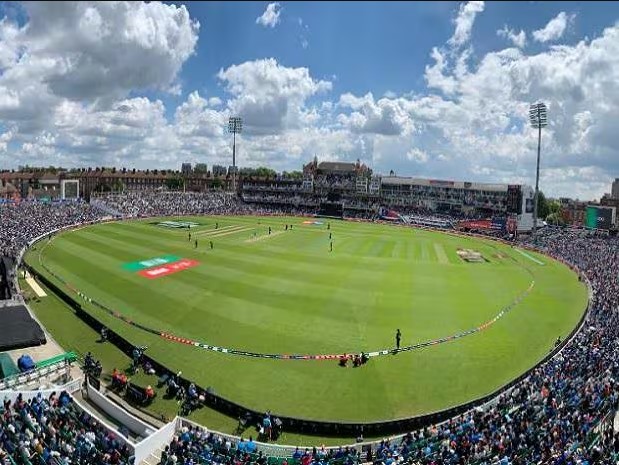ICC Cricket World Cup: The 2019 ICC Cricket World Cup, hosted by England and Wales, was a memorable tournament filled with thrilling matches, unforgettable moments, and statistical intrigue. One factor that subtly influenced the game but often escaped mainstream attention was the variation in boundary lengths across the tournament’s venues. Boundary sizes significantly affect game dynamics, from scoring rates to field placements and bowling strategies.
Table of Contents
Why Boundary Lengths Matter
ICC Cricket World Cup: In modern limited-overs cricket, especially One Day Internationals (ODIs), boundaries are not merely markers—they’re game-changers. Shorter boundaries tend to favor batsmen, making six-hitting easier and encouraging high scores. Conversely, longer boundaries reward good bowling and sharp fielding, allowing bowlers more room for error and fielders more chances to save runs.
ICC Guidelines for Boundary Lengths
ICC Cricket World Cup: According to the ICC’s playing conditions, the minimum boundary size in an international match should be 59.43 meters (65 yards) from the center of the pitch, with the maximum being 82.29 meters (90 yards). However, ground limitations and crowd seating often dictate the actual size, especially in older stadiums.
Boundary Lengths at 2019 World Cup Venues
ICC Cricket World Cup: The 2019 World Cup featured 11 venues across England and Wales. Each stadium presented different boundary dimensions, contributing uniquely to the matches hosted there. The table below provides an overview:
Average Boundary Lengths at Each Venue
| Venue | Straight (m) | Square (m) | Total Capacity | Matches Hosted |
|---|---|---|---|---|
| Lord’s, London | 70 | 65 | 30,000 | 5 |
| The Oval, London | 64 | 60 | 25,500 | 5 |
| Edgbaston, Birmingham | 67 | 63 | 25,000 | 5 |
| Old Trafford, Manchester | 70 | 66 | 26,000 | 6 |
| Headingley, Leeds | 65 | 61 | 18,350 | 4 |
| Trent Bridge, Nottingham | 63 | 58 | 17,500 | 5 |
| Hampshire Bowl, Southampton | 66 | 62 | 15,000 | 5 |
| County Ground, Taunton | 61 | 58 | 8,500 | 3 |
| Riverside, Chester-le-Street | 65 | 61 | 17,000 | 3 |
| Sophia Gardens, Cardiff | 62 | 60 | 15,643 | 4 |
| Bristol County Ground | 60 | 57 | 8,000 | 3 |
Note: Boundary lengths are approximations based on ICC and venue reports.
The Shortest and Longest Boundaries
- Shortest Boundaries: Bristol and Taunton were notably the smallest venues. At Bristol, square boundaries averaged 57 meters, often turning mis-hits into boundaries. These grounds saw high-scoring matches, such as West Indies scoring 421 against New Zealand in a warm-up match.
- Longest Boundaries: Lord’s and Old Trafford had the largest playing areas, with straight boundaries reaching up to 70 meters. These dimensions allowed for more balanced contests between bat and ball.
Impact on Scoring and Strategy
Boundary sizes influenced both team strategy and match outcomes. Here are a few tactical shifts witnessed:
High Scores vs Boundary Lengths
| Venue | Avg. 1st Innings Score | Avg. Boundary Length (m) | Notable Match Example |
|---|---|---|---|
| Trent Bridge | 312 | 60.5 | ENG 386/6 vs BAN |
| Bristol | 310 | 58.5 | PAK vs SL (Match Abandoned) |
| Lord’s | 260 | 67.5 | NZ 241/8 vs ENG 241 (Final) |
| The Oval | 315 | 62 | ENG 311/8 vs RSA |
| Old Trafford | 270 | 68 | IND 336/5 vs PAK |
Smaller boundaries directly correlated with higher scoring averages.
Bowler and Batsman Insights
Batsmen:
- Aggressive batsmen like Rohit Sharma and David Warner thrived on smaller grounds like Taunton and Trent Bridge.
- Short square boundaries allowed pull and cut shots to flourish.
Bowlers:
- Spinners struggled more on smaller grounds, as margin for error was thin.
- Pacers adapted with wider yorkers and slower bouncers at tighter venues.
Commentary from Players
In post-match interviews, several players acknowledged the impact of boundary dimensions:
- Virat Kohli: “At some venues, you’re always in the game even at 8 or 9 runs an over because of the shorter square boundaries.”
- Mitchell Starc: “We had to adjust lengths a lot at places like Bristol. A full ball there is a four if mistimed.”
Boundary Lengths and the World Cup Final
The final at Lord’s, with its longer boundaries, highlighted the balance between bat and ball. The match saw both teams score 241, leading to a Super Over. The expansive field gave bowlers room to operate and created one of the most tightly contested finals in history.
While fans often focus on runs, wickets, and drama, the boundary line lengths silently shaped the 2019 World Cup’s tactical depth. Teams that adapted to venue dimensions with smart batting and bowling strategies gained crucial advantages. Going forward, boundary sizes will continue to play a pivotal role in how the modern game evolves—offering a subtle but essential layer to cricket’s rich strategy.


